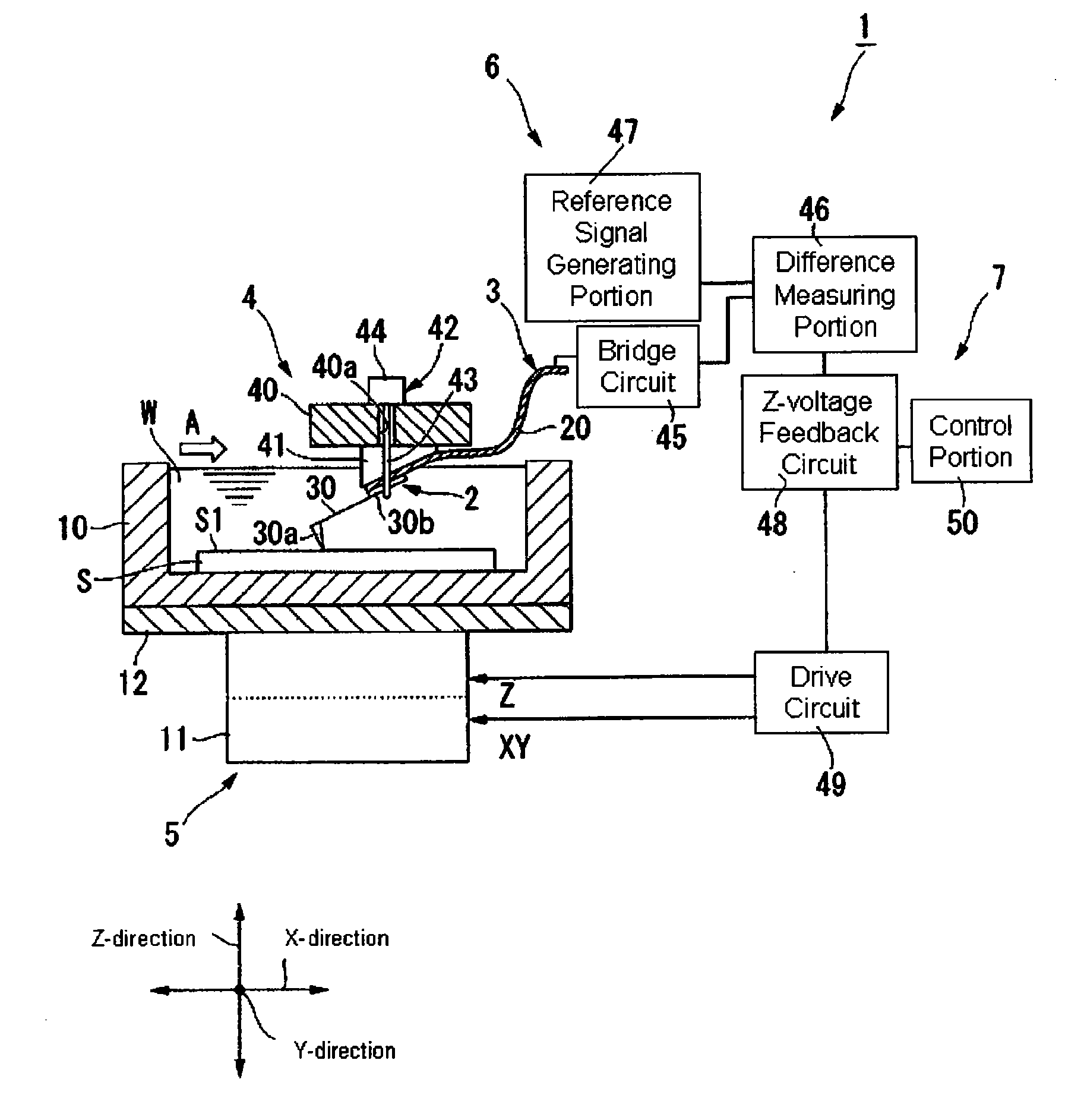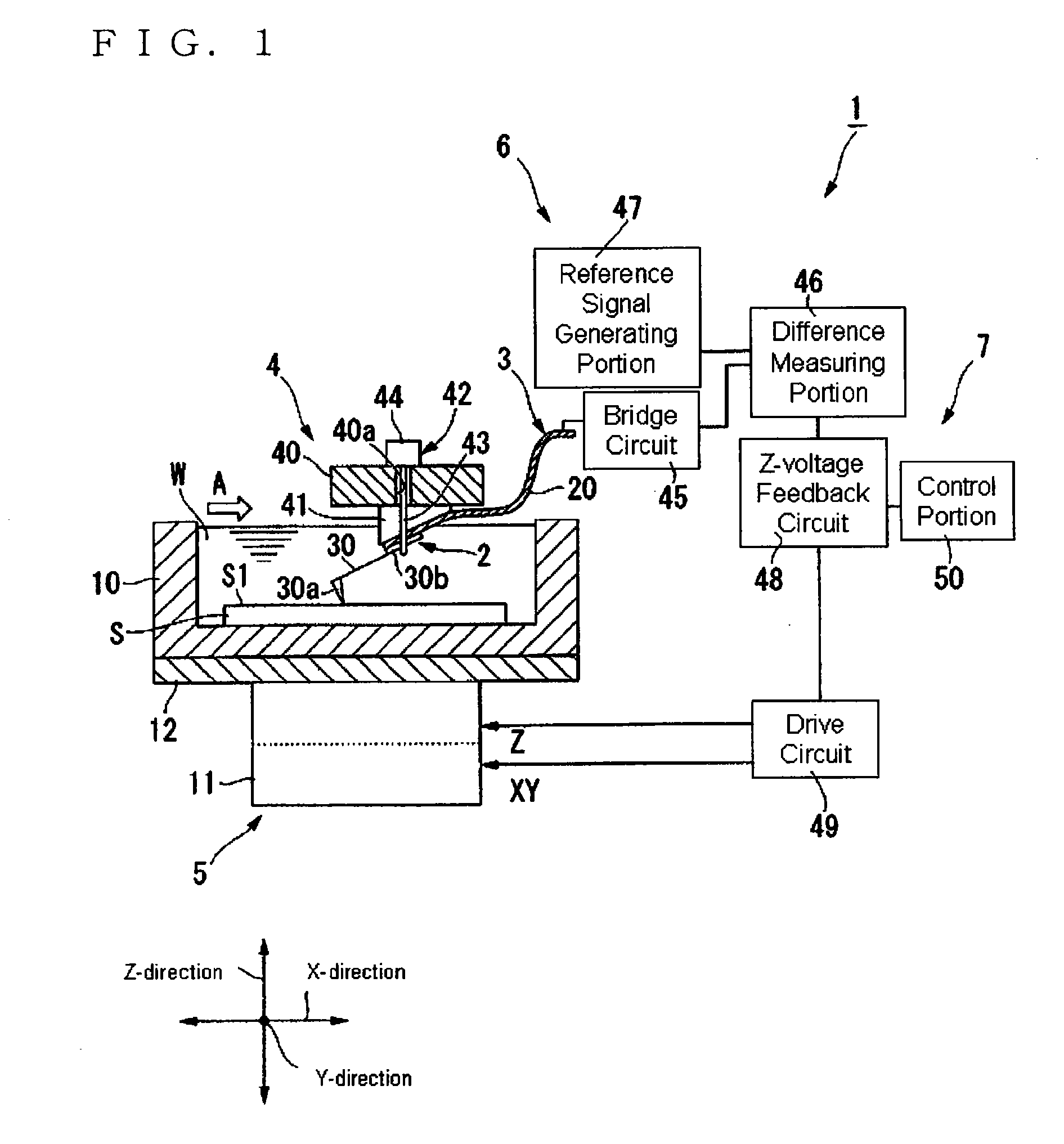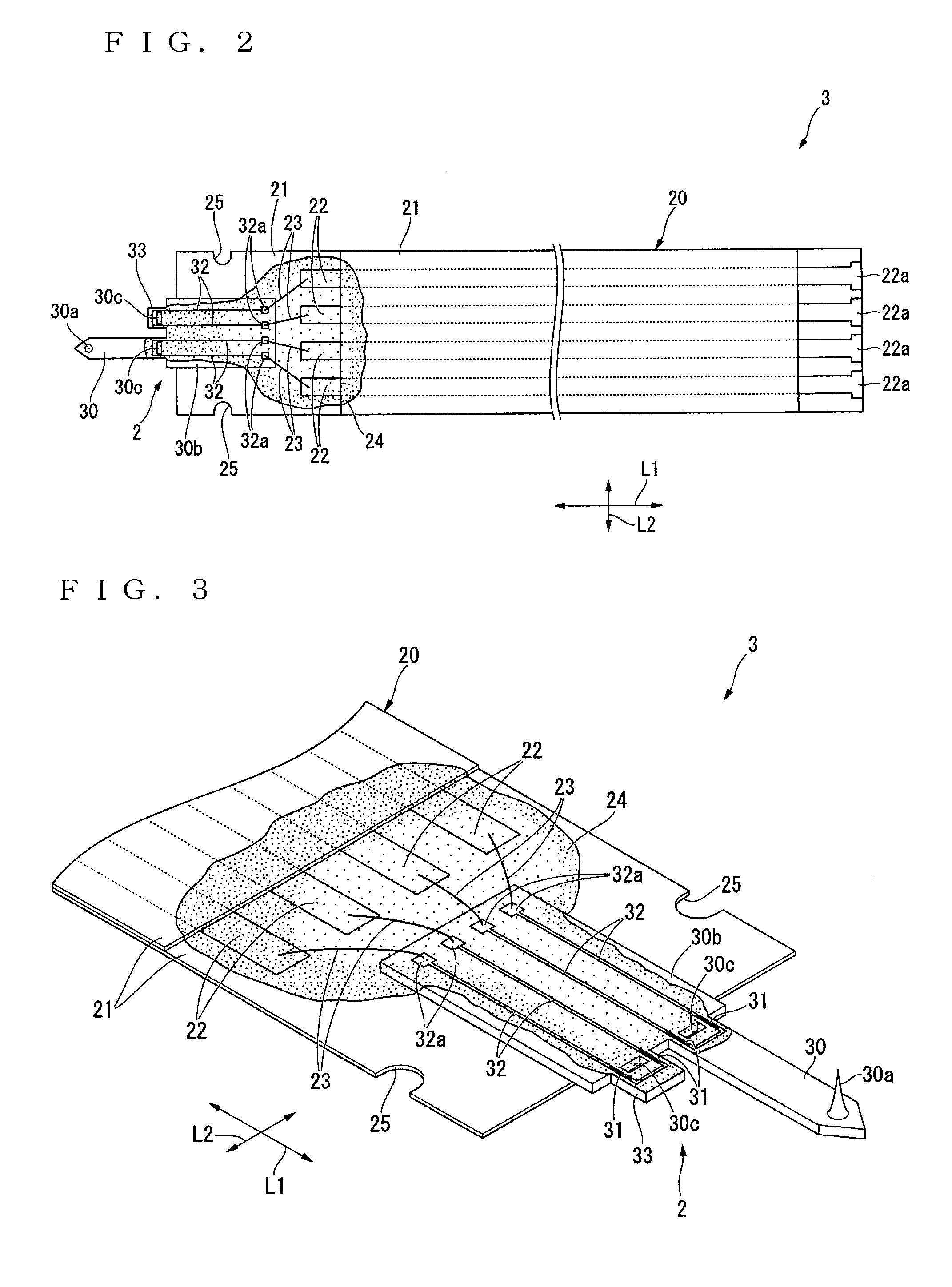Sensor for observations in liquid environments and observation apparatus for use in liquid environments
a technology for observation apparatus and liquid environments, applied in the direction of mechanical measurement arrangements, mechanical roughness/irregularity measurements, instruments, etc., can solve the problems of difficult work, high labor and time requirements, and difficult prealignment, etc., to achieve enhanced operability, simple method utilizing, and convenient use
- Summary
- Abstract
- Description
- Claims
- Application Information
AI Technical Summary
Benefits of technology
Problems solved by technology
Method used
Image
Examples
first embodiment
[0073]A first embodiment associated with the present invention is hereinafter described with reference to FIGS. 1-5. In the present embodiment, an example is given in which measurements are made after a sample S has been entered in a liquid vessel 10 where a liquid W is stored. An observation apparatus 1 of the present embodiment is used to observe the sample S in the liquid by measuring the topography of the surface of the sample S within the liquid W or various physical properties such as viscoelasticity. As shown in FIG. 1, the apparatus 1 has a sensor 3 for observations under liquid environments, a cantilever holder 4, a moving mechanism 5, a detection mechanism 6, and an observation mechanism 7. The sensor 3 has a self-detecting probe 2.
[0074]First, the sample S is held to the bottom surface of the liquid vessel 10 to prevent the sample from moving. The vessel 10 has an open top portion of U-shaped cross section. The vessel 10 is held on a sample stage 12, which in turn is fixe...
second embodiment
[0110]A second embodiment associated with the present invention is next described by referring to FIGS. 6-8. In the second embodiment, those components which are identical with their counterparts of the first embodiment are indicated by the same reference numerals as in the first embodiment and their description will be omitted.
[0111]The difference between the second and first embodiments is as follows. In the first embodiment, the sensor 3 for observations under liquid environments is held using the wires 43. In the second embodiment, the sensor 3 is held using fixing pins 63.
[0112]An observation apparatus of the present embodiment is adapted for observations under liquid environments and generally indicated by reference numeral 60. As shown in FIG. 6, the apparatus 60 has a fixing mechanism 62 having the fixing pins 63 of one pair. As shown in FIGS. 7(a) and (b), the fixing pins 63 are inserted in slots 40b extending through the holder body 40. The pins 63 can move in the widthwis...
third embodiment
[0118]A third embodiment associated with the present invention is next described by referring to FIGS. 9-12. In the third embodiment, those components which are identical with their counterparts of the first embodiment are indicated by the same reference numerals as in the first embodiment and their description will be omitted.
[0119]The differences between the third and first embodiments are as follows. In the first embodiment, the sensor 3 for observations in liquid environments is held by making use of the wires 43. In the third embodiment, the sensor 3 is held by utilizing fixing pins 73. In the first embodiment, the self-detecting probe 2 is supported to one end of the flexible substrate 20, while the external contacts 22a are formed on the other end. In the third embodiment, the self-detecting probe 2 is supported to around the center of the flexible substrate 20. The external connects 22a are formed at both ends.
[0120]That is, an observation apparatus of the present embodiment...
PUM
 Login to View More
Login to View More Abstract
Description
Claims
Application Information
 Login to View More
Login to View More - R&D
- Intellectual Property
- Life Sciences
- Materials
- Tech Scout
- Unparalleled Data Quality
- Higher Quality Content
- 60% Fewer Hallucinations
Browse by: Latest US Patents, China's latest patents, Technical Efficacy Thesaurus, Application Domain, Technology Topic, Popular Technical Reports.
© 2025 PatSnap. All rights reserved.Legal|Privacy policy|Modern Slavery Act Transparency Statement|Sitemap|About US| Contact US: help@patsnap.com



